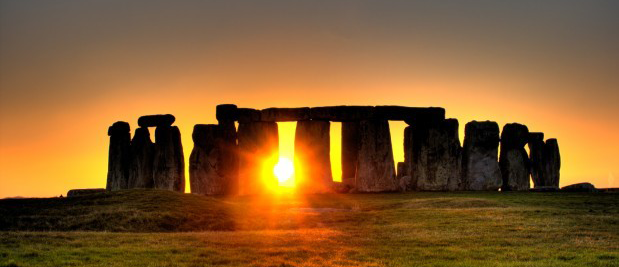Is Summer Solstice the happiest day of the year?
Whether you see it as a concrete landmark tracking time and season or symbolic of the dominant energy type flowing throughout every living being at any given time, there’s a good chance you recognize this day as significant.
Due to the tilt of our planet and it’s angle toward the sun, we experience four of these landmarks each year. Spring and Autumn Equinox, when the length of daytime light equals that of nighttime darkness, fall in mid March and September, respectively. Winter Solstice comes mid December with it’s shortest day and longest night. And then comes the one we all wait for, Summer Solstice in mid June, with its longest span of daylight between sunrise and sunset, earning it’s translation of the day the sun stands still.
Depending on where you are on our globe, your experience of these landmark days will be different. In southern hemispheres, the timing of winter and summer solstices swap dates. And the closer your are to the equator, the less drastic the changes between the shortest and longest days of the year.
~~~~~
Celebrating nature is the cornerstone of many belief systems. Within them, there are humanesque qualities related to each season. The extremes of these are symbolized by winter and summer, the yin and yang of time, weather and seasons. Winter’s yin is an introspective female energy ruled by the moon, sometimes dark and secretive, focused on the self reflection of how we feel and what we think. Summer’s yang is an outwardly focused male energy ruled by the sun, more bright and wide-open, focused on action and accomplishing.
Summer Solstice, being the longest stretch of dawn til dusk light of the entire year, is the pinnacle of that yang energy. With this in mind, bonfires, with the light and heat their fire energy creates, becomes a central theme to Summer Solstice celebrations.
But what that also means, as we teeter over that pinnacle, is that it marks a transition toward gradually increasing yin energy. Considering this aspect, celebrations also often focus on the strength of female energy and the fertility that brings.
~~~~~
In psychology, research has shown that the duration of day light across a twenty four hour period can impact a persons state of mind and over all well being.
Longer hours of day light allows people to maximize their potential as well as their quality of life. On the practical side, increased light and warmth give us more time to participate in outdoor activities. Increased activity boosts feel-good endorphins as well as the sun light itself hitting our eyes and skin igniting it’s own cascade of chemical reactions. And don’t forget an increase in the neurotransmitter serotonin we get from those longer days which also helps boost our mood. In addition, there is an element of inner motivation which seems to thrive on the mental and emotional high we get from this increased exposure to light during these longer days this time of year.
Contrastingly, the shorter days with earlier darkness of winter months leads many toward seasonal affective disturbances. Circadian rhythms can fall out of sync with an overload of melatonin getting in the way of our wake side of that cycle. Whether it be due to the practical aspect of being out of our homes less once it is dark and cold, or the heaviness of mood felt knowing it will be quite some time before we break free of that condition, multiple rationals support the notion that many of us just don’t feel our best during that time of year.
~~~~~
So whether you view Summer Solstice from the spiritual perspective of a celebration of life force energy or scientifically as a time when our physiology benefits from the intersection of positive brain chemicals stimulating us when there’s also more time to take advantage of that state, let’s all agree that June 21st has the strong potential to be your happiest day of the entire year….. so make the most of it!
______________________________________________________________________________________________________________
(image credit: aas.org – american astronomical society)
